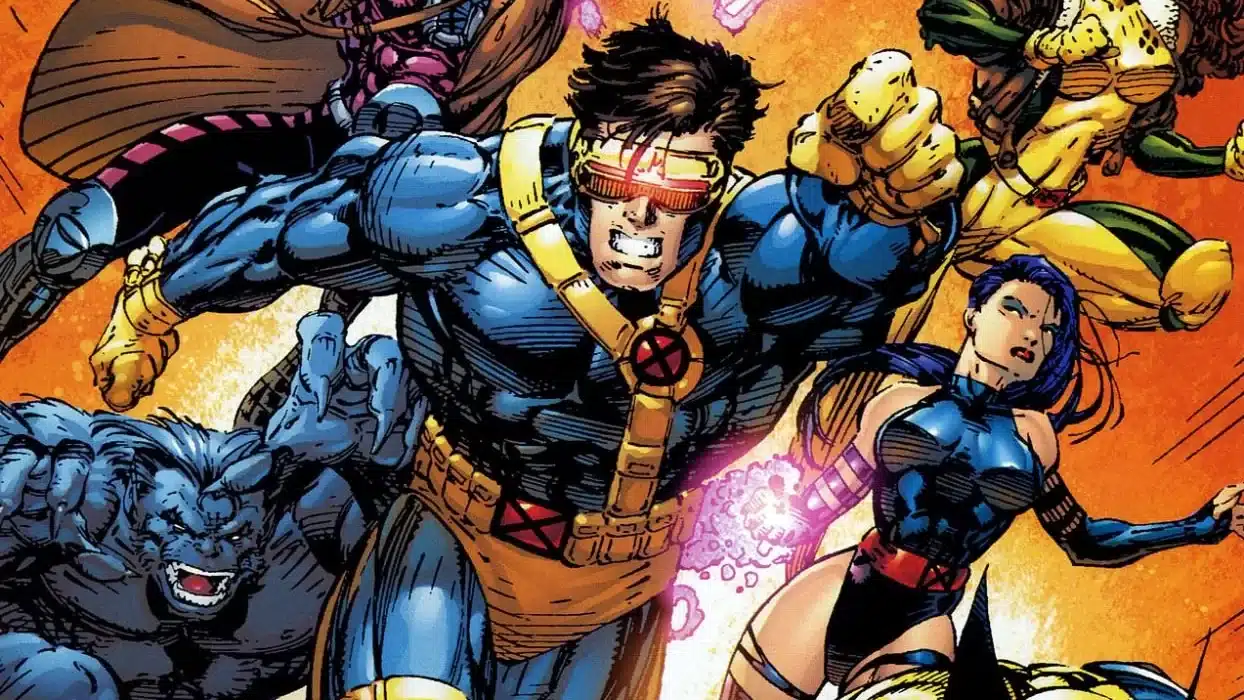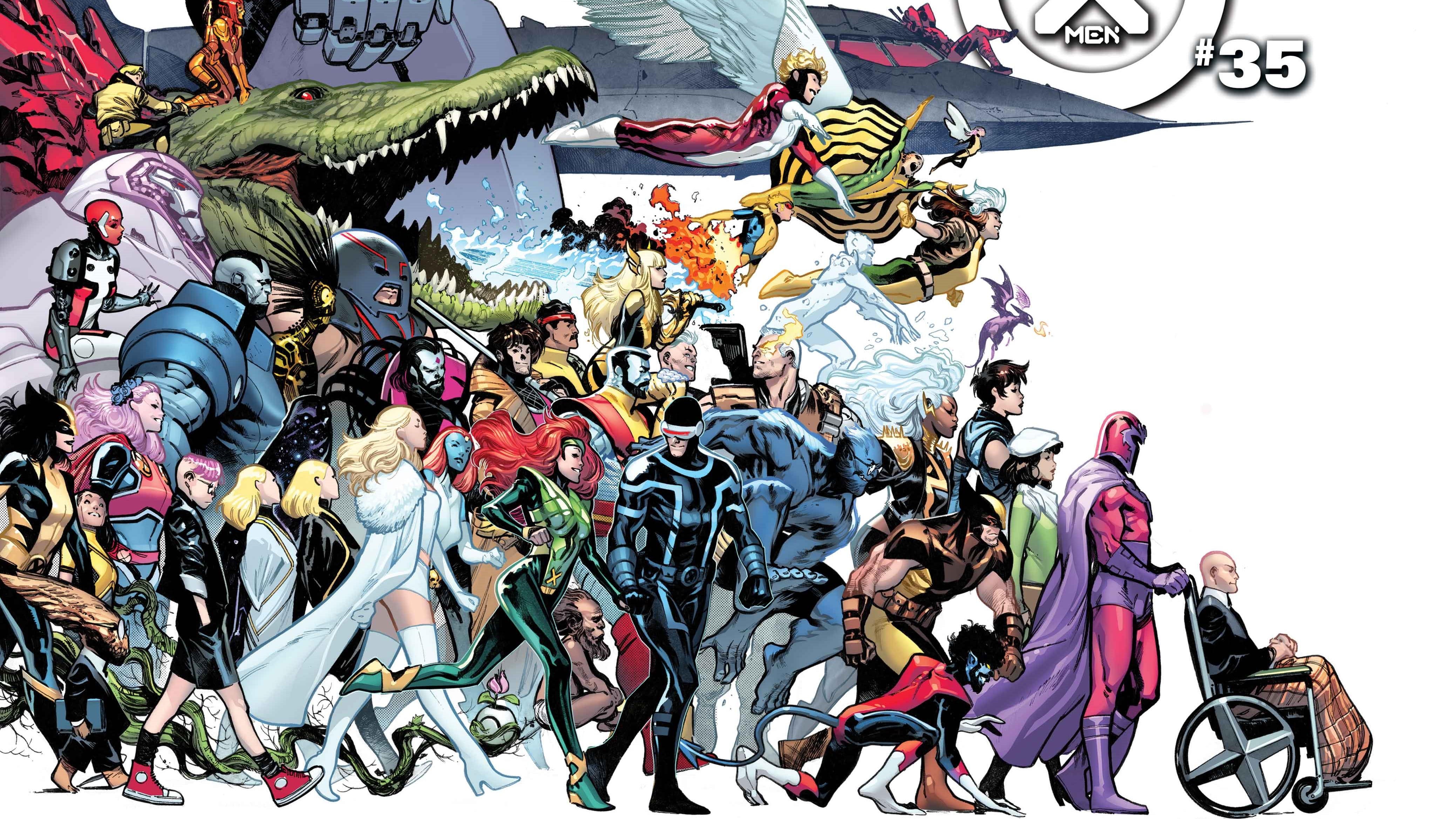The following first appeared in the ComicsXF newsletter. You can get early access to our editorials, a roundup of the week’s best content and get to know the members of the ComicsXFamily by subscribing right here.
Every year, almost inevitably, two things happen.
First, Marvel or DC will announce some big reset to a character’s status quo, or an event entirely based around nostalgia. Your Doomsday Clocks, your Secret Wars, hell, even an Inferno or two. I’ll complain, often loudly, about them being little more than cynical cash grabs, evidence of a franchise that has little to offer beyond masturbatory reminders of the quality they used to put out. Why innovate when we could read a sequel-slash-retrospective for the 37th anniversary of Crisis on Infinite Earths? And sure, the intensity of my whining will be entirely dependent on how much I enjoyed the originals, but come on, you’d have to be deliberately obtuse to pretend there’s any artistic merit, anything worth saying about Identity Crisis 2: This Time It’s Rorschach. Are nerds really that content to buy a shot-for-shot homage to something they liked as a kid? Aren’t we better than that?
The second thing that happens, without fail, is that I buy at least one version of that year’s new Pokémon game.
It’s a little harder to ignore that emotional disconnect some years than others.
This year, to celebrate the 25th anniversary of catching ’em all, I’ve been playing Brilliant Diamond, the non-Shining Pearl remake of the fourth generation’s games. While every Pokémon game since Yellow has had a release that can politely be called “contentious,” it wouldn’t be an exaggeration to say this has had one of the biggest backlashes in the fandom’s history. Everywhere from Smogon to Serebii, from Facebook to 4chan, has been adrift in a sea of nerdrage that’s genuinely impressive. When I think about why, however, my mind can’t help but drift back to capes, and what makes nostalgia work.
The Pokémon franchise, of course, is no stranger to remakes. Depending on whom you ask, the trend started in 1996, when Japan first got Pokémon Blue, an updated remix of the original Red and Green versions. Others will point to Fire Red and Leaf Green, which brought the original games up to the modern technological standard of 2004. The really cynical bastards among us will still say it was in ‘96, under the logic that putting out two versions of the same damn game is basically a remake already. No matter which way you look at it, however, taking a fresh look at the things that came before has always been a major part of the franchise, to the point where fans are constantly clamoring for and theorizing about new remakes. I’ve lost track of the amount of “region confirmed” memes I’ve seen over the years, and I’m definitely anticipating the influx we’re going to get for the Unova games.
The big point of contention this time around is that these remade games have traditionally added a lot of things that weren’t in the originals. There’s all the new Pokémon added between their respective releases, of course — the first three pairs of remakes each doubled (at least) the number of monsters available, by sheer virtue of being compatible with the other games of their generation. There’s usually additional story content as well — Fire Red and Leaf Green introduced the Sevii Islands, while remakes of the second and third generations each factored in content from the updated rereleases of their respective games. Considering the near-universal fandom agreement that Platinum was a marked improvement in every respect on the original Diamond and Pearl, a lot of people were excited to see exactly how the new remakes would incorporate it. But, just like every Pokémon from Victini to Calyrex, the answer is simple: It doesn’t.
Brilliant Diamond and Shining Pearl are remakes in a way that Pokémon fans simply aren’t used to, with very few major changes to their original versions. There are some quality-of-life changes, the updated type chart and the apparently obligatory ability to capture most of the endgame Legendary Pokémon from the first three generations, sure. The Underground is a little different, allowing for a slightly wider range of Pokémon to be caught before the postgame, and there’s some basic customization. Still, apart from a handful of postgame battles, Brilliant Diamond and Shining Pearl amount to little more than the original 2006 games with a fresh coat of paint, with little to say for itself.
They are, in many ways, the Pokémon equivalent of 2020’s Giant-Size X-Men: Tribute to Wein and Cockrum. There’s an audience, sure, and there’s an appeal to seeing something I loved reinterpreted through a modern lens, with the context of what came after. Ultimately, however, both offerings end up feeling obligatory, a quick buck and a quicker acknowledgement of what came before. In each case, I can’t help but think that new readers or players would be better served by experiencing the originals, and returning fans will inevitably be underwhelmed.
Still, a middling re-release didn’t make me any less excited for what was coming in the X-line, and the same can be said for Pokémon. We’re two months out from what’s undeniably the biggest swing the franchise has ever taken with Pokémon Legends: Arceus, and I’m anticipating that just as much as I did the start of the Krakoan age. With any luck, this’ll be just what the franchise needs, proof that it can do more than just rehash the classics.
And if not? Let’s be real, they won’t be hurting for money anyway. The dirty little secret with appeals to nostalgia is that they usually work. There’s nothing nerds as a group love more than something that’s almost exactly the same as what we liked, but just different enough to complain about — it’s the comfort food of comics and gaming. A little familiarity isn’t the worst thing in the world, especially during These Trying Times.
Weirdly enough, analyzing my response to these games has made me do the same for my thoughts on comics nostalgia-baiting. When it comes down to it, the single-player portion of any Pokémon game is about as important to me as any given issue of cape comics — I’m ultimately in it for the community. Whether that’s the competitive scene, or shitposting with Twitter mutuals about Cyclops being Black, I wouldn’t care about either franchise anywhere near as much if I didn’t have people to share it with. If I’ve walked away with any lesson, it’s this: Friendship is the most brilliant diamond of all.

Corey Smith
Corey Smith is probably tired right now. He's definitely trying not to think about everything he has to write! When he's not staring at a blank word document, odds are he's tweeting, playing Pokémon, or wondering how he ended up with such a smart-ass kid.





